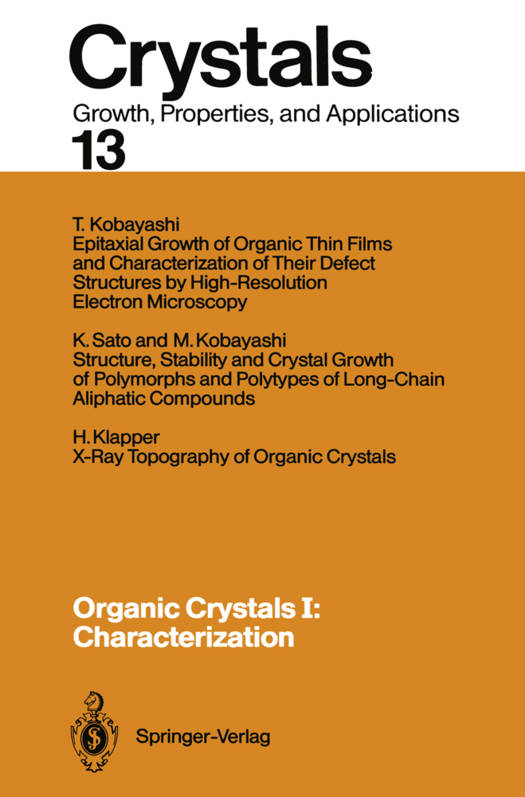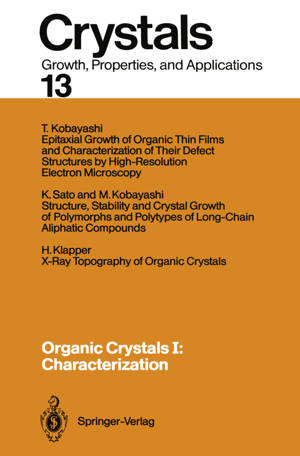
- Afhalen na 1 uur in een winkel met voorraad
- Gratis thuislevering in België vanaf € 30
- Ruim aanbod met 7 miljoen producten
- Afhalen na 1 uur in een winkel met voorraad
- Gratis thuislevering in België vanaf € 30
- Ruim aanbod met 7 miljoen producten
Zoeken
Omschrijving
Lattice defects of organic molecular crystals affect their optical or electrical properties by changing the local energy structure. Lattice defects also playa very important role in the chemical and physical properties, for example, as an active site of a catalyst or an initiating point of a solid state reaction. However, very little has been reported on the defect structure of real organic crystals. In the past ten years it became clear that the origin and the structure of the defects depend on the geometrical and chemical nature of the building units of the crystal, the molecules. Molecular size, form and anisotropy, charge distribution, etc. cause the characteristic structure of the defect. Accordingly, a defect structure found in one compound may not be found in others. The defect structure of an organic crystal cannot be defined solely by the displacement of the molecular center from the normal lattice site. A rotational displacement of a molecule is frequently accompanied by a parallel shift of the molecular center. In addition to the usual geometrical crystallographic defects, chemical defects are important too which originate, for example, from differences in the substitution sites of molecules carrying side groups. In order to reveal such defect structures, direct imaging of molecules by high resolution electron microscopy is the only direct method.
Alleen bij Standaard Boekhandel
+ 324 punten op je klantenkaart van Standaard Boekhandel
Beoordelingen
We publiceren alleen reviews die voldoen aan de voorwaarden voor reviews. Bekijk onze voorwaarden voor reviews.








